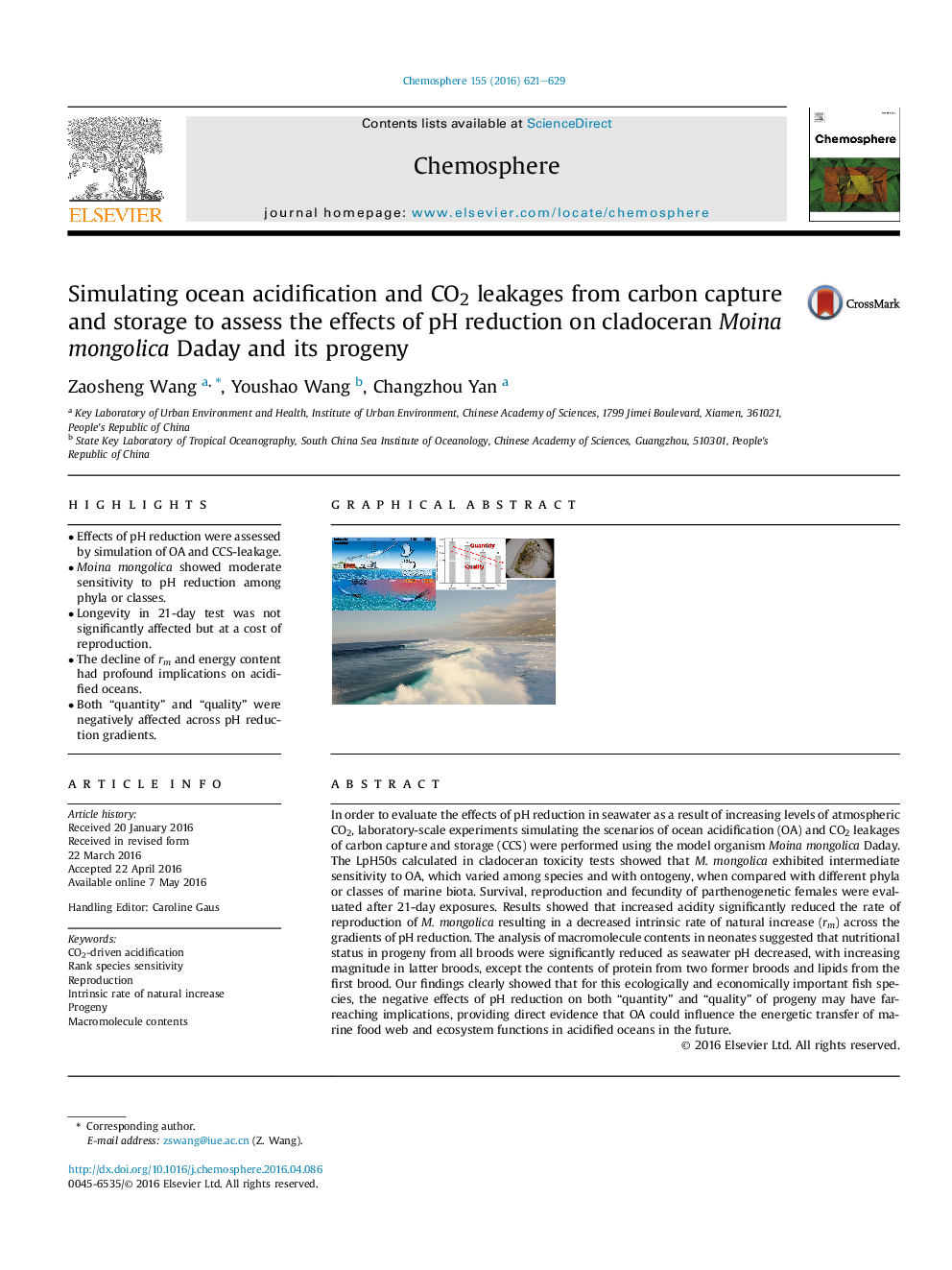| Article ID | Journal | Published Year | Pages | File Type |
|---|---|---|---|---|
| 4407535 | Chemosphere | 2016 | 9 Pages |
•Effects of pH reduction were assessed by simulation of OA and CCS-leakage.•Moina mongolica showed moderate sensitivity to pH reduction among phyla or classes.•Longevity in 21-day test was not significantly affected but at a cost of reproduction.•The decline of rm and energy content had profound implications on acidified oceans.•Both “quantity” and “quality” were negatively affected across pH reduction gradients.
In order to evaluate the effects of pH reduction in seawater as a result of increasing levels of atmospheric CO2, laboratory-scale experiments simulating the scenarios of ocean acidification (OA) and CO2 leakages of carbon capture and storage (CCS) were performed using the model organism Moina mongolica Daday. The LpH50s calculated in cladoceran toxicity tests showed that M. mongolica exhibited intermediate sensitivity to OA, which varied among species and with ontogeny, when compared with different phyla or classes of marine biota. Survival, reproduction and fecundity of parthenogenetic females were evaluated after 21-day exposures. Results showed that increased acidity significantly reduced the rate of reproduction of M. mongolica resulting in a decreased intrinsic rate of natural increase (rm) across the gradients of pH reduction. The analysis of macromolecule contents in neonates suggested that nutritional status in progeny from all broods were significantly reduced as seawater pH decreased, with increasing magnitude in latter broods, except the contents of protein from two former broods and lipids from the first brood. Our findings clearly showed that for this ecologically and economically important fish species, the negative effects of pH reduction on both “quantity” and “quality” of progeny may have far-reaching implications, providing direct evidence that OA could influence the energetic transfer of marine food web and ecosystem functions in acidified oceans in the future.
Graphical abstractFigure optionsDownload full-size imageDownload as PowerPoint slide
